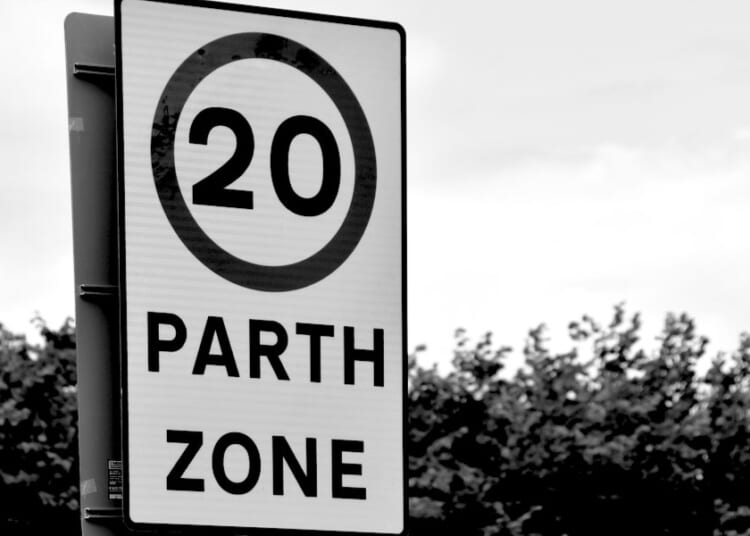MARK Drakeford’s announcement that he is stepping down as the First Minister of Wales was greeted with unalloyed joy by the right minded. Under his tenure public services have all got catastrophically worse while the stranglehold of extreme climate change legislation – of which the 20mph speed limit was just the start – continues to tighten.
A spark of light on the horizon when the Office for Statistics Regulation (OSR) accused the Welsh government of a lack of transparency over its claims that the 20mph speed limit would add only one minute to journey times appears to have been snuffed out. The ONS letter to the Welsh Government’s head of statistics referred to the source of the 20 mile claim – a long technical document entitled Explanatory Memorandum to the Restricted Roads (20 mph speed limit) (Wales) Order 2022 seemingly designed to obfuscate rather than enlighten. Prepared by the Economic Infrastructure Directorate it is replete with aspiration but low on evidence. The ‘benefits’ include an intention that it will ‘reduce the number of people being killed or seriously injured as a consequence of road traffic collisions in Wales’, and that it addresses ‘the issues of road safety and the effects from vehicles and roads on the environment and communities’ while encouraging ‘a shift to more active forms of travel and improve the local economy and environment in Welsh communities’. (My italics) It’s full of blather about supporting ‘the objectives of many Welsh Government strategies including Llwybr Newydd: the Wales Transport Strategy 2021 and the goals set out in other legislation such as the Active Travel (Wales) Act 2013 and the Well-being of Future Generations (Wales) Act 2015’. It reveals an aspiration that is more about changing lives than saving them.
Their response to the ONS criticism claims to assess the costs and benefits of such action. Yet the variety of causes of car accidents and collisions – not just speed – is simply not addressed.
It details that ‘fear of motor traffic’ as the ‘top concern’ parents give for driving their children to school. But is this fear real or perceived? This is not explored. Most parents of children I taught at primary school drove their children to school en route to workor dropping older children off at separate schools. The reason was convenience and time.
Predictably, the document cites the General Assembly of the United Nations and the World Health Organization and engages in an exercise of circularity referring back to Mark Drakeford’s original 2019 ‘announcement’ regarding 20mph speed limits with a curious ‘supporting’ link – not to a Parliamentary statement, but to the low-profile ‘LocalGov’ website referring to 20mph in ‘residential’ areas.
LocalGov is the UK’s largest local government dedicated website, with a reach of 25,000 professionals. To date there are zero comments on this ‘announcement’ and zero ratings. How curious. It is almost as if Mr Drakeford intended it to be very quietly announced indeed.
The cost is justified too. In an example of the ‘swindle and perversion’ that Orwell stated (in Politics and the English Language) this kind of writing leads to, replacing a 30mph sign with a 20mph sign may be an additional cost but the maintenance of the sign is not! A 30mph sign requires the same level of maintenance you see! Judging by the number of sprayed out new 20mph signs that I have seen, I wonder whether any ‘foresight’ of this was ever factored into the costings?
The Welsh Government’s target for 2040 is that 45 per cent of trips are to be made via active or sustainable travel, which means public transport, biking or legs, yet the public transport facilities to meet this that should have been ‘put in before any other anti-motorist legislation’ simply haven’t been.
How the idealistic conjecture relating to possible benefits of 20mph which include ‘increased retail spending, resulting from improved access (particularly amongst those with mobility challenges)’ is to be realised, even they admit they don’t know: ‘At this point in time, however, good quantitative evidence on which to calibrate this benefit remains lacking.’ You bet it does!
As for the cost of this policy, it’s projected at £32.5million between 2022-2027. Not included is expenditure on TROs (Traffic Regulation Orders) that need to be issued for each road that will remain at 30mph and is estimated at around a further million pounds. Then there is pre- and post-implementation monitoring which will incur a further cost of around £0.45m, plus an allowance of £1.6million for national and local communications campaign and a further £0.4m set aside for Welsh Government staff costs for management and implementation of the policy. All yet to be added on, as well as an allowance for costs associated with enforcement.
So what about the ‘only one minute will be lost in travel time’ claim? The ONS are referred to TFW (Transport for Wales) models and estimates, and to Imperial College London modelling estimates relating to the benefits and ‘dis-benefits’ from exhaust and non-exhaust emissions. Did any of these factor in the speeds of between 15-19 mph that many fearful and compliant drivers are now driving at, even on quiet roads, which would undoubtedly add on more journey time? I doubt it.
Earlier this month the Welsh Government quietly reported they were reducing the speed limit on a stretch of the A5 in North Wales from 60mph to 40mph to create a 20 mph ‘buffer’. Is a second front in the Welsh Government’s attack on the motorist about to open up? I fear so, Drakeford or no Drakeford.

